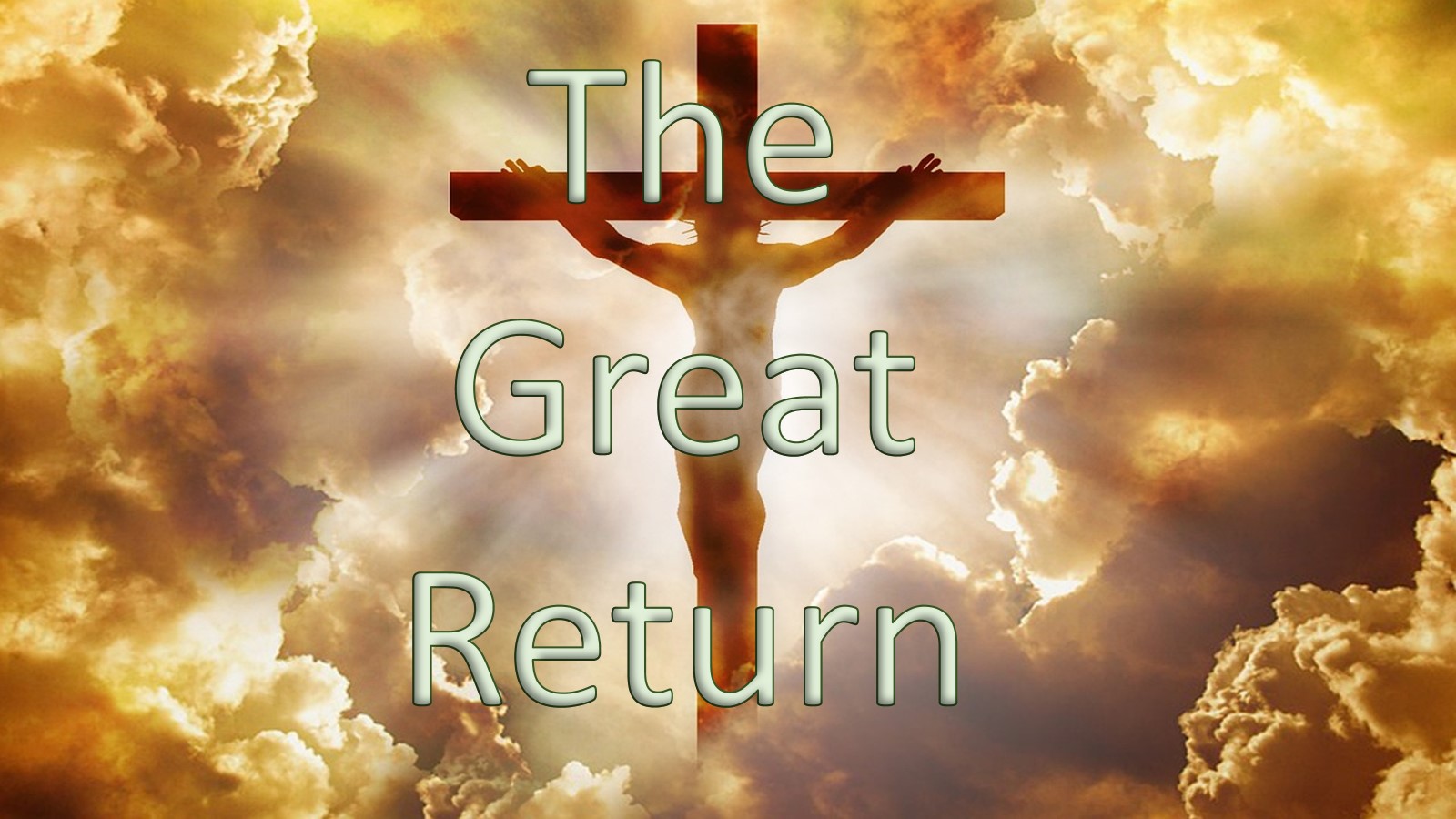What is the New Apostolic Reformation? It is a religious movement that emerged in the late 1980’s that positions itself as “The Third Wave of the Holy Spirit.” In this view the first wave was the restoration of tongues at Azusa Street, the Second Wave was restoration of the Charismatic gifts via the Charismatic Movement, and the Third Wave is the restoration of the Five-Fold Ministry. Antecedents to this movement include the Latter-Rain Movement and the “Manifest Sons of God.” The term was coined by C. Peter Wagner.
This article was birthed for three reasons: Reason #1 is that most critiques of the NAR are horrible and often conflate the NAR with the Charismatic Movement and Pentecostalism. Another reason is that many of these critiques neglect to include an analysis of their biggest problem: denial of the Hypostatic Union. This omission results in complete failure to understand them. The final reason is that the NAR is the perfect counterfeit, having doctrines that look like the early church on the surface but actually lead to a place far, far away from historic Christianity.
The Distinctives of the NAR
There are five distinctions between NAR and other groups. The NAR (1) Denies or neuters the Hypostatic Union, (2) embraces the “little gods” doctrine, (3) Embraces dominionism in a Charismatic version of Christian Reconstruction, (4) holds to a Post-Millennial(ish) eschatology, and (5) has a Gnostic/Hermetic understanding of the Anointing
–1 NAR teachers either neuter or deny the Hypostatic Union. The NAR affirms what is called the Kenotic Heresy, which teaches that Jesus was emptied of the divine nature during His early life and lived as a mere human filled with the Holy Spirit. The few who would affirm the orthodox doctrine of the Hypostatic Union would argue that Jesus NEVER expressed the divine nature during His earthly life. In this view, everything He did, including exercise of His royal authority, was as a man filled with the Holy Spirit.
C Peter Wagner, in his commentary on the book of Acts, discloses a nominal belief in the Hypostatic Union while neutering it. He writes the following in his commentary on Acts
As the Second Person of the Trinity, Jesus was the only individual who ever existed as 100 percent God and 100 percent human. The doctrine of the two natures of Christ is one of biblical Christianity’s theological nonnegotiables. Although Jesus was, therefore, never without all the attributes of God, He voluntarily gave up the use of these attributes during His incarnation—living, ministering and even thinking with His human nature only. How, then, did He do all the supernatural works and exhibit divine knowledge? It is very simple. He did them “through the Holy Spirit,” as Luke indicates in this passage.
C. Peter Wagner, The Book of Acts: A Commentary (Ventura, CA: Regal, 2008), 45.
Bill Johnson of Bethel, in his book “When Heaven Invades Earth,” chapter 7 “The anointing and the Antichrist Spirit, ” para 4, he writes
“Jesus lived His earthly life with human limitations. He laid his divinity aside as He sought to fulfill the assignment given to Him by the Father: to live life as a man without sin, and then die in the place of mankind for sin. This would be essential in His plan to redeem mankind. The sacrifice that could atone for sin had to be a lamb, (powerless), and had to be spotless, (without sin).
The anointing Jesus received was the equipment necessary, given by the Father to make it possible for Him to live beyond human limitations. For He was not only to redeem man, He was to reveal the Father. In doing so, He was to unveil the Father’s realm called heaven. That would include doing supernatural things. The anointing is what linked Jesus, the man, to the divine, enabling Him to destroy the works of the devil. These miraculous ways helped to set something in motion that mankind could inherit once we were redeemed. Heaven—that supernatural realm—was to become mankind’s daily bread.
The problem with denying the Hypostatic Union and embracing full blown Kenotic Heresy should be obvious. If Jesus truly ceased to be divine upon the incarnation, then the godhead changed. If the godhead is subject to time and elemental change, then God is not self-existent but existing in time. The godhead is reduced to a demigod status akin to Paganism.Wagner sought to avoid the obvious charge and argue that Jesus has possession of the properties of the divine Nature but does not have access to them. Johnson would later walk this statement back to appear more like Wagner, arguing that Jesus had possession – but not access to – the Divine Nature.
This nuance does not solve the heretical problem facing the NAR. Objects, by definition, have access to the properties they own. If Jesus does not have access to the properties of the divine nature, then He did not possess them. If Jesus Divine Nature did not function during his earthly ministry or He had no divine nature to function, then everything Jesus accomplished was spirit aided human effort, including his restoration to the godhead. If one mere man or anyone else who lacks access to the Divine Nature can attain godhood, then other could conceivably do so. The denial or neutering of the Hypostatic Union leads to the little gods doctrine.
–2 They teach what they call the “little gods” doctrine. The second distinction is that NAR folks believe that Jesus divine nature was restored to Him upon His resurrection as the result of His life of faith as a man filled with the Holy Spirit, and they believe that the Church becomes part of the godhead upon the general resurrection of the saints. This logically follows from their neutering of the Hypostatic Union. If Jesus could attain deification as a mere man, then so can we.
–3 NAR folks are dominionists, who seek to use spiritual power to seize physical power of the institutions of culture. This follows from the .little gods doctrine. If the anointing of the Holy spirit can make Jesus Lord of the earth, then the Church can attain dominion. In their parlance they call this “conquering the Seven Mountains.” One could think of the NAR in this sense as Charismatic Reconstructionism.
–4 They are “post-millennialish.” Many of them would not explicitly identify as such, but the NAR narrative of Charismatic Reconstructionism – the idea of taking dominion of the earth for Christ – requires a post-millennial eschatology.
–5 The NAR has a Gnostic understanding of the Anointing as a result of neutering of the Hypostatic Union. When we read in Scripture concerning the ministry of the Holy Spirit, we read that “…he will guide you into all truth: for he shall not speak of himself; but whatsoever he shall hear, that shall he speak: and he will shew you things to come. He shall glorify me: for he shall receive of mine, and shall shew it unto you. John 16:13-14″ Jesus taught the He had executive authority in directing the work and anointing of the Holy Spirit. This is an obvious reference to the divine Nature of Jesus as a mere man cannot direct the Holy Spirit. This establishes Jesus as Lord of the Anointing and the anointed life as a .life under the Lordship of Christ. When the gospels speak of the human nature of Jesus working under the anointing of the Holy Spirit, how does this command apply. The Holy Spirit operated under the direction of the Divine nature of Jesus when He anointed the human nature of Jesus.
Because the NAR neutered the Hypostatic Union, their theology lacks a robust idea of the executive control over the administration of the Holy Spirit. By neutering the Hypostatic Union, they have denied Jesus’ executive control over the administration of the Holy Spirit and therefore denied Jesus as Lord, as they build their entire theology on the anointing. If Jesus is not Lord of the anointing, then the anointing is Lord. This creates pressure to devolve into Gnosticism where some have the divine spark and others do not, with those who have that spark wielding godlike authority and everyone else owing absolute allegiance to the little gods among us.
What does not define the NAR; the relation between the NAR and similar movements
At the beginning of this article I wrote that one of the reasons for this article was the the NAR is a perfect counterfeit. This means that on the surface it looks like the best version of the true gospel. Once you start digging you find out it is a monstrocity. Imagine that you are on top of a mountain peak positioned exactly at a continental divide in the Rockies. you are facing north and your feet are 18 inches apart with each foot on the opposite sides of the divide. It is raining. The drops falling on your right foot will end up in the Gulf of Mexico, while the drops on your left foot – just inches away – will end up in the Pacific Ocean. This is analogous to the difference between the NAR and true revival. The following is a presentation on the differences between the NAR and similar movements.
The Charismatic Movement. There are some who would conflate the NAR with the Charismatic Movement. This is a category error. The NAR is a subset of the Charismatic Movement. All adherents to the NAR are Charismatics, but not all Charismatics are NAR. One should not classify Charismatic doctrines concerning topics such as revival, spiritual warfare, spiritual gifts, and the five-fold ministry as NAR simply because NAR teachers also teach on those topics.
The Five-fold Ministry is another area which is conflated with the NAR in a category error. While all adherents to the NAR believe in the five-fold ministry, not all believers in the five-fold ministry are NAR. The NAR has particular understandings of the four offices apostle, prophet, evangelist, and pastor-teacher in the five-fold ministry that differ from both Biblical understanding or modern understandings of Ephesians 4:11-16 outside the NAR. Specifically, The NAR purpose for the Five-Fold has little to do with the Biblical mandate of equipping the Saints, but exists only as a stage for the Apostles and Prophets to sit on thrones and have the rest of the Church bow before them.
Revivals, particularly the Endtime Revival or Final Great Awakening, are conflated with the NAR. Revivals and revivalism, however, have been around for over 300 years and have a following much broader than the NAR and even includes non-Charismatic Christians. All who hunger for the experience of the Presence of God long for revival.
The tables below compares and contrast the NAR with several similar movements. The NAR is compared to Charismatics, Messianic Jews, Revivalists, and New Covenant Church of the Apostles.
NAR vs Charismatic Movement
| Attribute | NAR | Charismatic Movement |
| The Trinity | Typically Trinitarian | Most are Trinitarian, with notable exceptions such as Oneness Pentecostals |
| Hypostatic Union | Rejects or neuters Hypostatic Union in favor of Kenotic Heresy | The Trinitarian branch typically accepts Hypostatic Union, with notable exceptions such as the NAR |
| Concept of Dominion | Seek dominion of worldly kingdoms as a Charismatic version of Christian Reconstruction | |
| Spiritual Gifts | Yes | Yes |
| Five-Fold Ministry | Restoration of Apostolic and Prophetic | Various views on the five-fold, with a consensus that everyone has a role in the Church |
| Eschatology | Post-Millennial | Pre-Millennial |
| Basic Narrative | Acquire dominion over the kingdoms of this world via carnal actions powered by the anointing | Restoration of spiritual gifts to the Church to gain victory over Satan |
NAR vs Messianic Judaism
| Attribute | NAR | Messianic Judaism |
| The Trinity | Typically Trinitarian | Most are Trinitarian, with notable exceptions. |
| Hypostatic Union | Rejects or neuters Hypostatic Union in favor of Kenotic Heresy | The Trinitarian branch typically accepts Hypostatic Union, others are significantly heterodox. Jews for Jesus embraces Hypostatic Union |
| Concept of Dominion | Seek dominion of worldly kingdoms as a Charismatic version of Christian Reconstruction | They believe the return of the Messiah Yeshua (Jesus) will result in a new Israeli hegemony. Most teach a one new man theology of Jews and Gentiles together |
| Spiritual Gifts | Yes | Lean towards acceptance of Charismatic gifts |
| Five-Fold Ministry | Restoration of Apostolic and Prophetic | Open to it |
| Eschatology | Post-Millennial | Pre-Millennial |
| Basic Narrative | Acquire dominion over the kingdoms of this world via carnal actions powered by the anointing | Restoration of Israel and her embrace of Messiah Yeshua, with the physical rule of the Messiah Yeshua over the whole world from Jerusalem as the Endgame |
NAR vs Revivalist
| Attribute | NAR | Revivalists |
| The Trinity | Typically Trinitarian | Typically Trinitarian |
| Hypostatic Union | Rejects or neuters Hypostatic Union in favor of Kenotic Heresy | Typically accepts Hypostatic Union, with notable exceptions such as the NAR |
| Concept of Dominion | Seek dominion of worldly kingdoms as a Charismatic version of Christian Reconstruction | Typically no concept of dominion beyond Christ’s coming |
| Spiritual Gifts | Yes | Some believe in Charismatic gifts, but consensus only around the idea that God can be experienced |
| Five-Fold Ministry | Restoration of Apostolic and Prophetic | Various views on the five-fold. |
| Eschatology | Post-Millennial | Various |
| Basic Narrative | Acquire dominion over the kingdoms of this world via carnal actions powered by the anointing | Gain experience of the presence of God through repentance resulting in a transformed life. |
NAR vs New Covenant Church of the Apostles
| Attribute | NAR | New Covenant Church of the Apostles |
| The Trinity | Typically Trinitarian | Trinitarian. |
| Hypostatic Union | Rejects or neuters Hypostatic Union in favor of Kenotic Heresy | Enthusiastically embraces The Hypostatic Union, and regards the NAR as damnable heresy. |
| Concept of Dominion | Seek dominion of worldly kingdoms as a Charismatic version of Christian Reconstruction | Dominion consists of royal standing in God’s courts that exists irrespective of one’s earthly standing. No call to conquer the earth through carnal action, but taking our place as kings and priests in God’s royal courts in prayer and spiritual warfare. |
| Spiritual Gifts | Yes | Yes |
| Five-Fold Ministry | Restoration of Apostolic and Prophetic | The five-fold has always existed in the Church, with a consensus that everyone has a role in the Church. Apostolic ministries exist mainly as Holy Spirit empowered Church Planters. All Four offices exist to equip the saints for ministry and maturity |
| Eschatology | Post-Millennial | Historic Pre-Millennial |
| Basic Narrative | Acquire dominion over the kingdoms of this world via carnal actions powered by the anointing | Restoration of spiritual gifts to the Church to gain victory over Satan to liberate people for God, and equipping the saints to fulfill God’s call, with the Galilean Wedding between the Church and Christ the Conquering King as the Endgame. |
g



